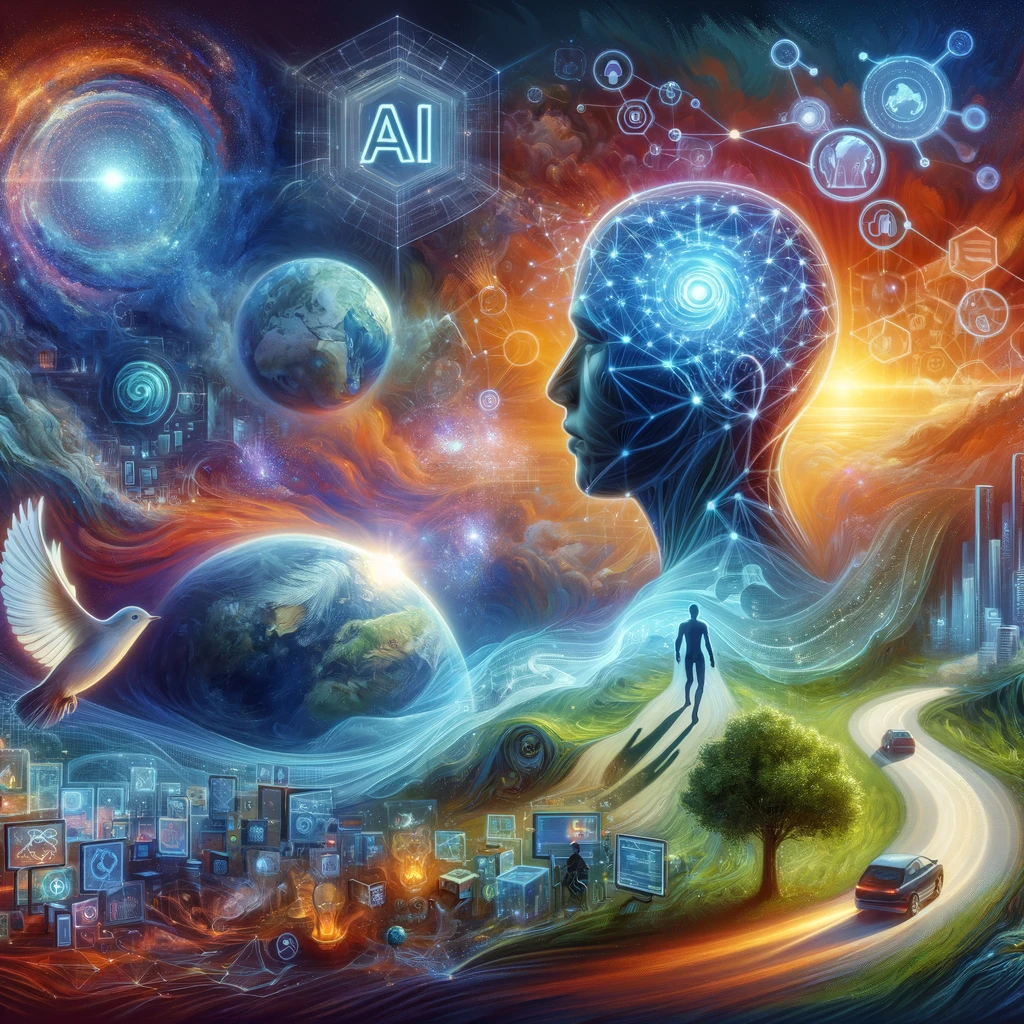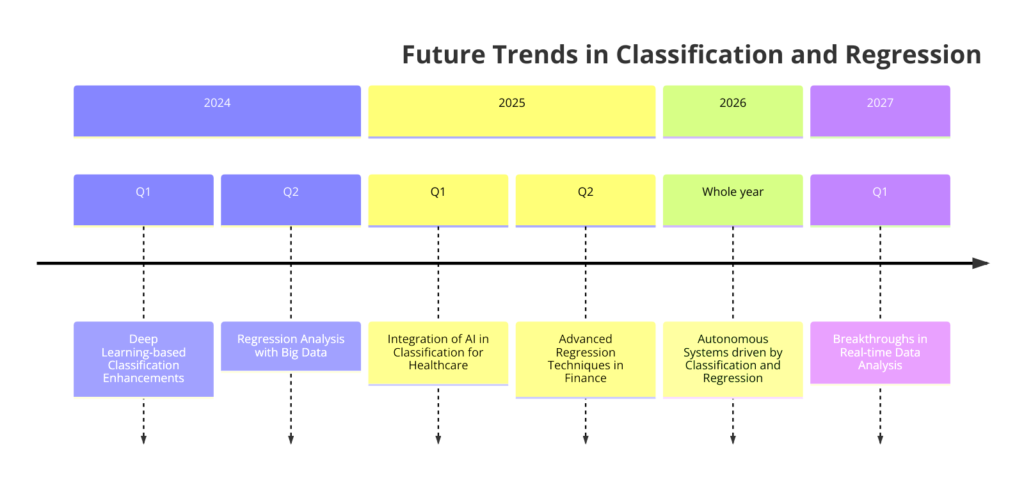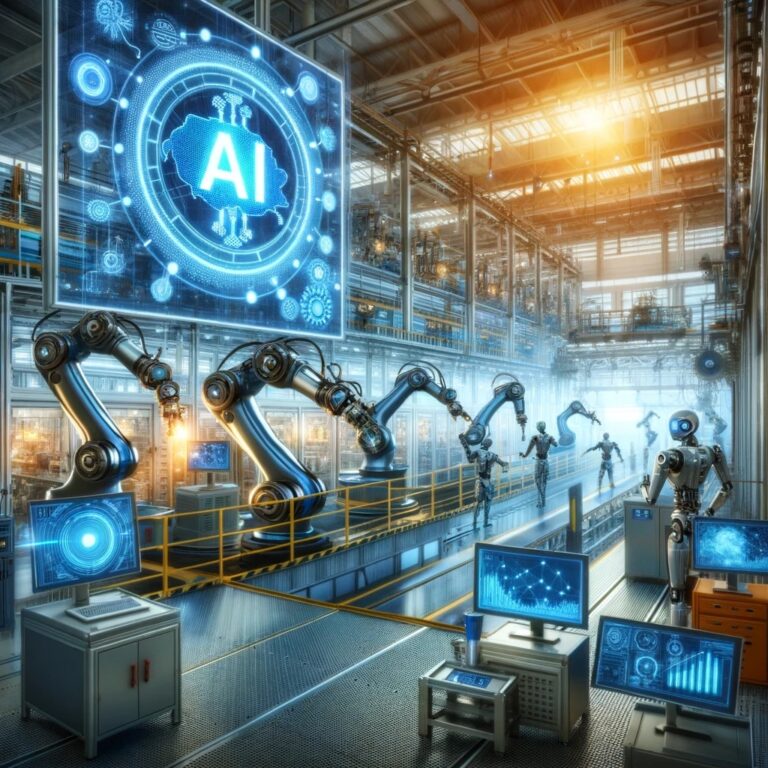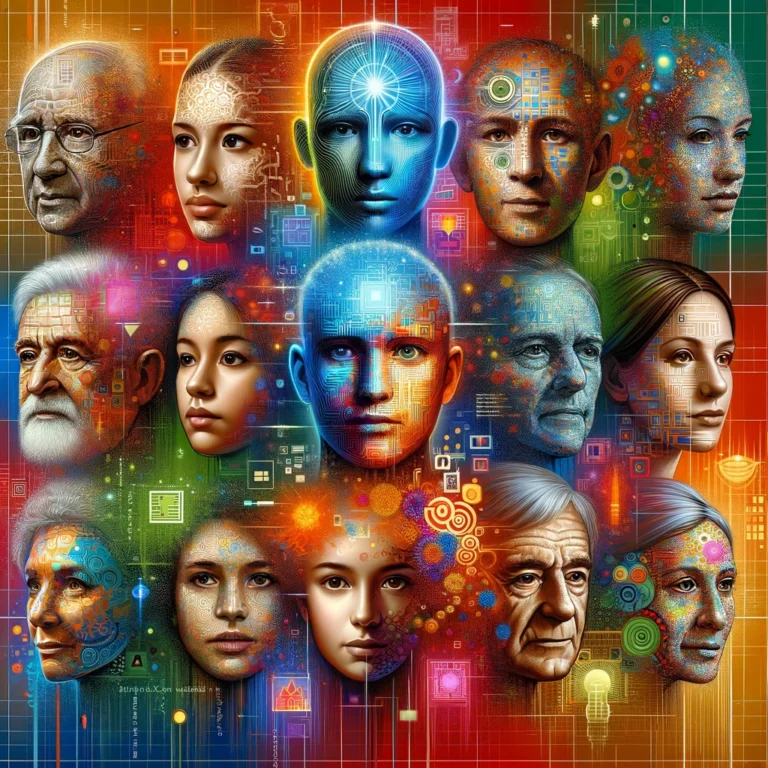AI’s Decision-Makers: The Role of Classification and Regression in Machine Learning
In the expansive domain of machine learning (ML), classification and regression stand out as fundamental tasks that underpin a vast array of artificial intelligence (AI) applications. From the predictive analytics powering decision-making processes in business to the algorithms enabling autonomous vehicles, these tasks are central to the development and application of intelligent systems. This introduction provides an overview of classification and regression, highlighting their significance and ubiquitous presence in AI technologies.
1. Introduction: The Cornerstones of Machine Learning – Classification and Regression

Classification and Regression: An Overview
In machine learning (ML), classification and regression are fundamental tasks that power a wide range of artificial intelligence (AI) applications. From predictive analytics in business to algorithms in autonomous vehicles, these tasks are central to the development and use of intelligent systems.
Classification
Classification involves categorizing data into predefined classes or groups. It deals with discrete outcomes, such as determining whether an email is spam or not, or identifying the category of an image. The output of a classification model is a class label.
Regression
Regression predicts a continuous quantity, like a price, temperature, or probability.
It answers questions like
“What will be the price of this house?”
or
“What is the likelihood of a customer making a purchase?”
The output of a regression model is a numerical value.
Significance in AI Applications
The importance of classification and regression in AI is immense. These tasks form the foundation for predictive modeling, allowing machines to learn from data and make informed decisions. Their applications are vast and impactful:
- Classification is used in image and speech recognition, sentiment analysis, customer segmentation, and more.
- Regression plays a crucial role in forecasting, risk assessment, and optimization, supporting financial models, real estate valuations, and risk assessments in loans and insurance.
Together, classification and regression provide a broad spectrum of capabilities in machine learning, making them indispensable for advancing AI technologies.
As we explore classification and regression further, it becomes clear that these tasks are not just technical challenges but gateways to understanding and interacting with the world through data. They embody the essence of machine learning: transforming data into knowledge and actionable insights.
2. Understanding Classification in Machine Learning

Classification, a pivotal task in machine learning, involves categorizing data into predefined classes or groups based on its features. It’s a form of supervised learning where models are trained on labeled datasets, learning to predict the class labels of new, unseen data.
The Purpose of Classification
The Purpose of Classification
Classification assigns class labels to data points based on their features, enabling machines to make discrete predictions. This is crucial in applications requiring categorization, such as identifying fraudulent transactions, diagnosing diseases, or categorizing text documents.
How Classification Works
Classification models are trained on labeled datasets, learning to associate patterns in input features with class labels. The training process involves adjusting model parameters to minimize prediction errors. Once trained, the model can accurately classify new, unlabeled data.
Examples of Classification Tasks
- Email Filtering: Classifying emails as spam or not spam based on content and sender attributes.
- Image Recognition: Identifying objects within images, like distinguishing between different animals or vehicles.
- Sentiment Analysis: Categorizing text data by sentiment, such as positive, negative, or neutral.
- Disease Diagnosis: Predicting the presence or absence of diseases based on symptoms and test results.
Key Algorithms in Classification
- Decision Trees: Use a tree-like model of decisions and their possible consequences.
- K-Nearest Neighbors (KNN): Classifies data based on the majority class among the K nearest neighbors.
- Support Vector Machines (SVM): Finds the hyperplane that best separates different classes.
- Naive Bayes: Assumes independence among predictors, effective for text classification.
- Neural Networks: Especially Convolutional Neural Networks (CNNs), excel in image and speech recognition.
Classification is vital in machine learning, enabling a wide range of AI applications requiring discrete categorization. From spam detection to medical diagnostics, classification enhances decision-making processes across industries.
3. Exploring Regression in Machine Learning

Regression, a fundamental task in machine learning, focuses on predicting continuous outcomes based on input features.
It’s a type of supervised learning where models are trained to forecast numerical values, offering invaluable insights across various domains.
Definition and Role of Regression
Regression predicts continuous outcomes based on input features, modeling the relationship between dependent and independent variables. It’s essential for forecasting, trend analysis, and decision-making in business, science, and engineering.
Common Regression Techniques
- Linear Regression: Uses a linear approach to model the relationship between variables.
- Polynomial Regression: Models the relationship as an nth degree polynomial.
- Ridge and Lasso Regression: Introduce regularization to prevent overfitting.
- Decision Trees for Regression: Segment the predictor space into distinct regions for piecewise constant predictions.
- Random Forest Regression: Uses multiple regression trees to improve accuracy and control overfitting.
- Support Vector Regression (SVR): Fits the error within a certain threshold, robust to outliers.
Real-World Applications of Regression
- Financial Forecasting: Predicting stock prices and market trends.
- Real Estate Valuation: Estimating property values.
- Energy Consumption Analysis: Forecasting energy demand.
- Sales Forecasting: Predicting future sales volumes.
- Medical Research: Modeling relationships between drug dosage and patient response.
Challenges and Considerations
Ensuring model accuracy with noisy or incomplete data, preventing overfitting, and dealing with non-linear relationships are key challenges. Proper model and feature selection, along with validation techniques, are crucial.
Regression provides a systematic approach to predicting continuous variables, offering essential insights across various applications. It enables data-driven decisions, contributing significantly to AI and analytics advancements.
4. Differences and Similarities Between Classification and Regression

Classification and regression are two fundamental types of supervised learning in machine learning and artificial intelligence (AI), each serving distinct purposes yet sharing common principles.
Understanding their differences and similarities is crucial for applying the right models to the right tasks.
Differences Between Classification and Regression
Differences
- Output Type: Classification predicts discrete labels, while regression predicts continuous values.
- Applications: Classification is used for categorization, while regression is used for forecasting.
- Problem Nature: Classification separates data into distinct classes, while regression models relationships to predict continuous outcomes.
Similarities
- Supervised Learning: Both rely on labeled datasets for training.
- Feature Importance: Both require understanding and selecting the right features for effective models.
- Model Evaluation: Both need robust evaluation metrics, though specific metrics differ.
- Overfitting and Underfitting: Both must address these challenges.
How They Are Applied Differently Yet Interrelated

- Integrated Approaches: Combining both models for complex AI systems.
- Transition from Classification to Regression: Reframing tasks for more granular insights.
Understanding the distinctions and connections between classification and regression is crucial for leveraging the full spectrum of machine learning capabilities. Despite their differences, their foundational principles highlight the cohesive nature of ML techniques.
5. Challenges in Classification and Regression

Classification and regression, while foundational to machine learning and artificial intelligence (AI), come with their own sets of challenges.
These challenges not only affect model performance and accuracy but also raise ethical considerations in their application.
Addressing these issues is crucial for the development of reliable, fair, and effective AI systems.
Overfitting and Underfitting
Balancing generalization without overfitting or underfitting is a primary challenge. Techniques like cross-validation, regularization, and pruning help mitigate these issues.
Data Quality and Availability
The performance of models depends on the quality and quantity of data:
- Insufficient Data: Leads to underfitting.
- Noisy Data: Affects accuracy.
- Imbalanced Data: Biases models towards majority classes.
Techniques like data augmentation and oversampling address these challenges.
Ethical Considerations
- Bias and Fairness: Ensuring models do not perpetuate biases.
- Transparency and Explainability: Making complex models understandable.
- Privacy: Protecting individual data privacy.
Advanced Challenges
- Scalability: Efficiently handling large datasets.
- Adaptability: Adapting to changes in data distributions.
- Integration: Combining classification and regression tasks.
Addressing these challenges and ethical considerations is essential for developing reliable and fair AI systems. Ongoing research and ethical practices will shape the future of classification and regression.
6. Advanced Techniques and Applications in Classification and Regression

The field of machine learning is continually evolving, with advanced techniques enhancing the capabilities and applications of classification and regression models.
These innovations not only improve model accuracy and efficiency but also expand the potential uses of AI across various domains.
Advanced Algorithms
- Deep Learning: Neural networks like CNNs and RNNs handle high-dimensional data by learning complex patterns.
- Ensemble Methods: Techniques like Random Forests and XGBoost improve accuracy by combining multiple models.
- Transfer Learning: Uses pre-trained models for high performance with limited data.
- AutoML: Automates model selection and optimization, making ML accessible to non-experts.
Innovative Uses and Case Studies
- Healthcare: Diagnosing diseases from medical images and predicting patient outcomes.
- Financial Market Prediction: Forecasting stock prices and market trends.
- Autonomous Vehicles: Recognizing objects and predicting trajectories for navigation.
- Personalized Content Recommendation: Categorizing content and predicting user preferences.
Challenges and Future Directions
Advanced techniques offer improvements but also present challenges like computational costs and model interpretation. Future developments will focus on explainability, ethical AI, and interdisciplinary approaches.
Advanced algorithms and innovative applications demonstrate the dynamic nature of ML. As the field progresses, these techniques will continue to drive AI capabilities, offering solutions to complex problems and transforming industries.
7. The Future of Classification and Regression

As machine learning continues to evolve, the future of classification and regression holds promising advancements and new frontiers.
These foundational techniques of supervised learning are set to become more sophisticated, accessible, and integrated into a wider array of applications.
Predicting Advancements in Techniques
- Deep Learning Integration: Improved neural network architectures for handling complex data.
- Semi-supervised and Unsupervised Learning: Reducing reliance on labeled data.
- Enhanced Model Explainability: Making models more interpretable.
- Cross-domain Applications: Leveraging interdisciplinary data and knowledge.
- Automated Machine Learning (AutoML): Making sophisticated techniques accessible to non-experts.
New Frontiers and Evolving Role
- Personalized Medicine: Developing treatment plans based on individual profiles.
- Environmental Modeling: Predicting climate impacts and informing conservation efforts.
- Ethical AI Development: Ensuring fairness, transparency, and privacy.
- Human-AI Collaboration: Enhancing decision-making in various fields.
The future of classification and regression is marked by technological advancements and ethical considerations. These techniques will drive AI innovation and solve critical challenges, ensuring AI development benefits all of society.
8. Conclusion: Emphasizing the Importance of Classification and Regression in AI

Classification and regression stand as fundamental pillars within the vast and dynamic field of machine learning, underpinning a multitude of applications that drive artificial intelligence (AI) forward.
From enabling precise medical diagnoses to powering the algorithms behind financial forecasting, these techniques are integral to harnessing the potential of AI across various domains.
The Indispensable Roles of Classification and Regression
Classification and regression are critical for making sense of data and providing actionable insights. They underpin predictive modeling, enabling AI to transform industries and solve complex problems.
The Continuous Evolution of Techniques
Advancements in deep learning and other methodologies enhance the capabilities of these models. The future promises further innovations and the integration of ethical considerations into model development.
Advocating for Responsible and Innovative Use
The power of classification and regression requires ethical use. Addressing bias, fairness, transparency, and privacy is crucial. Continuous innovation and interdisciplinary collaboration will unlock new possibilities.
Classification and regression are essential tools in machine learning, enabling AI to learn from data and make predictions. Guided by innovation and ethical principles, these techniques will shape the future of AI, driving progress and ensuring positive societal impact.
FAQ & Answers
1. What is classification in machine learning?
Classification is a machine learning task where an AI model categorizes data into predefined classes or labels.
2. How does regression differ from classification in AI?
Regression predicts continuous output values, while classification predicts discrete labels or categories.
Quizzes
Quiz 1: “Identify the AI Task” – Decide whether given scenarios use classification or regression.
- A healthcare provider wants to predict whether patients will develop a certain disease based on their medical history, lifestyle factors, and genetic markers.
- An online streaming platform wants to recommend movies to users based on their previous viewing history and preferences.
- A weather forecasting company aims to predict the amount of rainfall in a particular region over the next week.
- An e-commerce platform wants to classify customer feedback into categories such as “positive,” “negative,” or “neutral” to understand customer sentiment.
- A social media platform wants to identify and classify posts as either “spam” or “not spam” to improve user experience.
- A manufacturing company wants to predict the likelihood of equipment failure based on sensor data and maintenance records.
- A marketing firm wants to predict customer churn based on historical data about customer interactions, purchasing behavior, and demographics.
- A financial institution wants to assess the creditworthiness of loan applicants based on their financial history, credit score, and other relevant factors.
Here are the answers for the scenarios:
- Regression
- Classification
- Regression
- Classification
- Classification
- Regression
- Classification
- Classification
Quiz 2: “Real-World AI Applications” – Match AI applications to either classification or regression.
- Predicting Stock Market Movement: Using historical stock prices and market data to predict whether a stock’s price will increase or decrease tomorrow.
- Task: Classification
- Customer Churn Prediction: Analyzing customer data to predict whether a customer is likely to churn (cancel their subscription or leave the service) in the near future.
- Task: Classification
- Medical Diagnosis: Analyzing patient data, such as symptoms, medical history, and test results, to classify whether a patient has a particular disease or condition.
- Task: Classification
- Predicting Housing Prices: Using features such as location, square footage, number of bedrooms, etc., to predict the selling price of a house.
- Task: Regression
- Sentiment Analysis: Analyzing text data from customer reviews or social media posts to determine the sentiment (positive, negative, or neutral) associated with a particular product or topic.
- Task: Classification
- Credit Risk Assessment: Evaluating the creditworthiness of loan applicants based on financial history, credit score, income, etc., to determine the likelihood of default.
- Task: Classification
- Weather Forecasting: Using historical weather data and atmospheric conditions to predict future weather patterns, such as temperature, precipitation, and wind speed.
- Task: Regression
- Image Recognition: Classifying images into predefined categories, such as identifying objects, animals, or people within the image.
- Task: Classification








It was good and meaningful